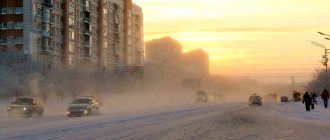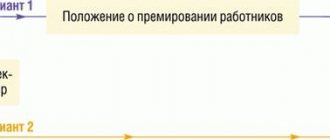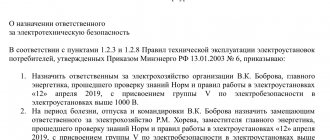Hello! In this article we will tell you what working conditions are considered harmful or dangerous.
Today you will learn:
- Who can work in enterprises with hazardous working conditions (HCL);
- How are such conditions stipulated in employment contracts?
- What additional payments are due to working people?
How to determine how harmful production is
In order to determine how harmful or dangerous production is and how these factors affect workers, workplaces are certified. This process affects all jobs that exist in the enterprise.
What if the organization has recently started its activities? In this case, certification is carried out 2 months after the start of work.
For each workplace, it is determined to what extent it complies with safety and labor protection requirements, and to what extent workers are provided with protective equipment. An assessment of working conditions in the complex is also carried out.
Physical factors
Physical hazardous and harmful production factors include ionizing or electromagnetic fields, vibration, noise, ultrasound, thermal radiation, etc.
In this group of production factors, in contrast to the other 3, one can trace the clearest boundaries between the concepts of “hazardous factor” and “harmful factor”.
For example, constant exposure of workers to noise, vibration or ultrasound harms their health, impairing their hearing or contributing to the development of certain diseases.
Important! The effect of physical factors is comparable to the delayed action of an explosive mechanism: health deteriorates imperceptibly, but the longer the influence of unfavorable conditions continues, the more deplorable the employee’s condition will ultimately be.
Unlike harmful factors, dangerous ones have a faster impact on the human body: their action can instantly turn a normally functioning member of the work team into a disabled person.
At the forefront of such factors are electric current (of a certain strength), hot objects or the risk of falling from a great height (both the worker himself and various objects on him).
Most often, workers in hot shops, builders, machine operators, machine operators - all those who, as part of their duties, have to constantly be in contact with machines, mechanisms and other components of production - encounter these unfavorable production factors.
Occupational diseases and injuries that can interfere with normal performance are the result of exposure to physical hazardous and harmful production factors.
VUT factors
Divided into several groups. We will look at each in more detail.
Chemical.
Associated with various chemicals. mixtures, enzymes, hormones and biological substances that are obtained as a result of chemical synthesis.
Physical.
- Humidity;
- Radiation;
- Vibration;
- Dust;
- Lighting (insufficient or excessive), uneven, with pulsation.
Biological.
- Presence of microorganisms, bacteria;
- Related to biological mixtures and substances
Labor.
- Intensity of activity;
- High duration of the work process;
- Level of severity of work.
List of specialties eligible for
According to information for 2020, more than three hundred types of activities fall into the hazardous category. Deviations of real indicators of the working environment and the labor process from existing standards for occupational health determine its harmfulness and danger. There are four main classes of production conditions identified by SOUT (special assessment of working conditions):
- Optimal. When, while maintaining proper performance, there is no negative impact on the body. The standards, as a rule, concern only the microclimate in the production area and the load during the activity. All other factors are considered favorable.
- Acceptable. At a level of adverse impact that does not exceed the hygiene indicators of the work process. The employee’s body has time to recover before the start of the next shift, so the conditions are generally considered safe.
- Harmful. They are characterized by the presence of negative effects on the body and exceeding safety standards. Harmfulness is determined by various factors:
- Physical. They affect human health.
These include: temperature, humidity, lighting, radiation, vibration, dust, etc.
- Biological.
- These are bacteria, microorganisms.
- Chemical.
- Various mixtures and substances obtained through chemical synthesis, such as hormones and antibiotics.
- Labor.
- The intensity of the labor process, its duration and severity.
The third class is divided into four degrees of harmfulness:
- The first degree is considered to be a production environment in which the impact of work process factors changes the functional state of the body, but its recovery occurs later than the next return to work. As a result, there is a risk of poor health.
- In the second case, functional changes are more persistent and lead to mild occupational diseases when working in this mode for more than 15 years. In this case, there is no loss of professional ability to work.
- The third is characterized by working conditions, when diseases in mild and moderate form can manifest themselves directly during the period of work. Moreover, there is a risk of loss of ability to work.
- The fourth degree causes the greatest harm. The disease can become severe and the risk of loss of ability to work increases.
The law provides additional paid leave for an unfavorable work environment. Its duration is determined by the level of harmfulness and is at least one week.
Important! In accordance with the Labor Code of the Russian Federation (Article 117), rest is due to workers whose occupation corresponds to 2, 3 and 4 degrees.
In industry
According to Decree No. 298/P-22 (Sections I-XII) of the USSR State Committee for Labor, many industrial jobs are hazardous. Harmful workplaces include:
- Development of deposits of ferrous and non-ferrous metals and other minerals for metallurgical production.
- Mica mining, mines.
- Geological exploration and topographic-geodetic work.
- Coke industry, coal distribution.
- Oil and gas sector.
- Chemical industry.
- Metal processing.
- Nuclear power.
- Radioelectronic and electrical production.
As an example, we can name the activities of a miner, steelmaker, or miner. And this list is far from complete.
In production and on the workshops
In this area, the list of specialties is also excessively huge, and therefore cannot be fully disclosed in this article. Looking at it briefly, we can note it based on Resolution No. 298/P-22 (sections XXII-XXIX, XXX-XXXII, XXXIV-XXXV) of the USSR State Committee for Labor. List of hazardous work in production and workshops:
- Enterprises producing reinforced concrete, glass, cement, stone foundry products.
- Agriculture and national economy.
- Food industry.
- Printing and communications.
- Textiles and light industry.
Examples include such specialties as a baker, a cable fitter, a finisher of reinforced concrete products, and a copyist of printed forms.
In medicine
For certain categories of medical workers, due to the risk of infection and other dangers from interaction with patients, a third class is also established and additional rest is provided. The following medical workers are entitled to benefits:
- Persons providing anti-tuberculosis care.
- Doctors who diagnose and treat HIV-infected people.
- Employees working with people with mental disorders (Article 22 of Law No. 3185-1-FZ).
Reference! The number of additional days varies among medical staff depending on the field of medicine. Those providing mental health care are given more rest (14-35 days) than those providing TB and HIV care (14-21 days).
Other positions
There are many other positions in various areas of human activity that are harmful from various points of view: physical, psychological and others. In accordance with Resolution No. 298/P-22 of the State Committee for Labor of the USSR (sections XLIII.). People employed in hazardous positions include people working:
- in the military sphere and military personnel (for example, with ammunition and explosives);
- in the transport service (electric train drivers, pilots);
- in astronautics;
- in state and cooperative trade (cooks, confectioners);
- research laboratories.
The work of teachers, educators, emergency workers, and divers is also considered harmful.
For being harmful to cooks
The specifics of a cook's work at the stove include a difficult working environment, increased sanitary and hygienic requirements, and a high level of responsibility. All these circumstances explain the inclusion of this position in the list of harmful ones. Accordingly, cooks also require additional vacations.
To determine its duration, they resort to the help of accredited bodies that carry out a special assessment of working conditions, taking into account factors such as physical activity, temperature, noise level, vibration exposure, etc.
Attention! According to the law, if the SOUTH assigns a workplace at least the second degree of hazard, the cook has the right to additional leave of at least 7 days.
Now you know who is entitled to additional leave for hazardous working conditions. Also learn how it is provided and how to calculate it.
How are they classified?
It is clear that difficult working conditions can cause negative consequences of various types: loss of ability to work, exacerbation of existing diseases, acquisition of work-related diseases, and so on.
The degrees of harmful working conditions are divided as follows:
- Class 1: these are conditions that provoke various functional changes. At the same time, health is restored when a person stops contacting harmful factors;
- Grade 2: changes in the body become sustainable and lead to the appearance of prof. diseases;
- Class 3: these conditions can cause loss of ability to work (albeit temporary) during activities;
- 4th grade: such conditions provoke the development of prof. severe diseases, stimulate the development of existing diseases and can cause complete loss of ability to work.
The Russian Federation has developed and operates a list of hazardous work. It is he who is turned to when it is necessary to determine the harmfulness of working conditions in a particular industry.
Chemical factors
The group of chemical hazardous and harmful production factors is the most extensive of the 4 groups under consideration. It includes both generally structured substances and complex compounds and compositions.
Based on the nature of the impact on the worker’s body, chemical substances are divided into:
- for toxic;
- annoying;
- sensitizing;
- carcinogenic;
- mutagenic;
- affecting reproductive function.
Chemical hazards and harmful production factors are also distinguished by the way they enter the body of a working person (through the respiratory system, gastrointestinal tract, skin or mucous membranes).
GOST 12.1.007 divides chemical hazardous substances into 4 classes:
- extremely dangerous;
- highly dangerous;
- moderately dangerous;
- low-risk.
Factors are assigned to one or another hazard class depending on indicators such as:
- MPC (maximum permissible concentration of a harmful substance);
- SSD (average lethal dose when administered into the stomach);
- MLC (average lethal concentration);
- KVIO (possible inhalation poisoning coefficient);
- ZOD and ZHD (zone of acute and zone of chronic action).
A special subgroup should include chemical substances that have distinct effects on the body. These include allergens, carcinogens, substances that have a harmful effect on reproductive function, aerosols, etc. They can lead to a wide range of consequences for the health of workers - from allergic reactions to neoplasms that can degenerate.
Important! Materials common in everyday life, such as cement and asbestos, as well as natural diamonds, can adversely affect the health of people who regularly come into contact with them, leading to dystrophic diseases of the upper respiratory tract.
And constant contact during work with metals such as gold, copper, silver, and their compounds can lead to unpleasant consequences in the form of a deviated nasal septum, which impedes breathing, or allergic diseases of the skin, eyes and respiratory tract. At the same time, metabolic processes in the body may be disrupted.
Members of labor collectives of chemical industry enterprises, builders, welders, etc. are most susceptible to the effects of these factors.
List of professions with hazardous working conditions
This register is valid for the current year. Initially, it was developed and consolidated in the USSR.
It includes the following range of professions:
- Persons who work in enterprises related to the mining industry;
- Working in the field of metallurgy;
- Mining ferrous and non-ferrous metals;
- Persons employed in enterprises producing thermoanthracite, coke and coke chemicals;
- Those who produce generator gas;
- Workers creating dinas products;
- Employees of companies with chemical activities;
- Working with ammunition, gunpowder, explosives;
- Employees of oil refineries;
- Employees of gas processing enterprises;
- Persons processing coal, gas condensate and oil shale;
- Employed in metalworking enterprises;
- Persons employed in electrical production and repairing electrical devices;
- Persons engaged in the manufacture of electronics and radio equipment;
- Persons who create glass and porcelain objects;
- Citizens working with synthetic fibers;
- Employees of enterprises producing paper and pulp;
- Working in healthcare institutions;
- Transport service employees;
- Persons who deal with substances containing radioactivity;
- Carrying out activities in the field of nuclear industry and energy;
- Divers;
- Gas cutters;
- Welders who work inside the tank or compartments of the vessel;
- Persons who interact with dangerous germs;
- Specialists in etching metal in hazardous solutions;
- Specialists who clean metal with quartz sand;
- Specialists of mercury substations;
- Citizens who are employees of power plants;
- Employees of enterprises related to the food industry;
- Those involved in the restoration, repair and construction of objects;
- Employees of enterprises in the field of communication services;
- Workers of agricultural organizations interacting with agrochemicals;
- Chemical industry training specialists;
- Mining Training Specialists;
- Coal Industry Training Specialists;
- Lime slakers;
- Locksmiths;
- Vulcanizers;
- Stokers;
- Solderers;
- Machinists;
- Varnishers.
The persons listed on this list are citizens entitled to benefits.
Hazardous professions according to lists No. 1 and 2
Working conditions class 3 subclass 3: additional pay and benefits
Harmful professions (list Nos. 1 and 2) were created 60 years ago and remain relevant to this day. The first list includes particularly dangerous and difficult activities that pose a threat to life. List No. 2 - professions associated with contact with harmful labor factors. Due to this, employees involved in the areas receive permanent health problems during long-term interaction. Therefore, to obtain the right to benefits, it is necessary to comply with the conditions for working time in hazardous conditions.
Important! The difference between the groups lies in the degree of impact on the body. The second group poses less danger.
List No. 1: particularly harmful conditions
“Pests” in lists No. 1 and 2 are prescribed in the corresponding government decree. The first includes professions associated with the critical impact of harmfulness on the body, bordering on a threat to life:
- employees working above ground level in mining;
- workers in the production of ferrous and non-ferrous metals;
- gas and oil producers;
- involved in the production of building materials, as well as repair and restoration work;
- chemical production workers;
- employees of a glass processing plant;
- healthcare workers;
- involved in the printing business.
Professions with hazardous working conditions where additional leave is required
According to this list, there is a list of professions that are directly related to harmful ones. For example, a driver at a metallurgical plant will also qualify for early retirement if he has worked the required number of years. Teachers who teach the rules of handling chemicals and reagents are also included in the first list. The second list of hazardous occupations includes a smaller number of specialties.
List No. 2 of preferential professions
This list includes persons:
- processing metals and coal (welders, shop workers, rolled metal production);
- signalmen;
- employees of food factories;
- railway workers;
- social service workers;
- pharmaceutical production workers.
The specific list includes the following professions:
- electricians;
- geologists;
- agricultural machinery drivers;
- reinforcement workers, concrete workers;
- rolling stock drivers, conductors;
- workers installing communications equipment and maintaining stations;
- workshop for the production of metal pipes, chain-link mesh.
For your information! In order to avoid mistakes and correctly determine which category an employee belongs to, all professions are divided into lists. They are constantly adjusted according to the economic needs of the state.
Who cannot work in positions with VUT
There are a number of restrictions on the performance of official duties of this kind. Moreover, these restrictions are established by the legislation of the Russian Federation.
In accordance with it, restrictions apply to the following persons:
- For employees who are under 18 years of age;
- For persons with health problems;
- For females. In particular, they cannot work with mercury, in boiler rooms, in jobs where they need to manually move heavy objects, or in servicing equipment in heavy engineering enterprises.
Harmful working conditions in an employment contract
If the profession involves the possibility of causing damage to a person’s health or life, the following clauses must be included in the employment contract:
- Information on the payment of benefits, compensation and leave to the employee;
- Information about all existing risks (with their classification);
- Information about the measures that the employer takes to preserve the life and health of its employees.
In addition to this information, the contract specifies all the guarantees that are provided to the employee.
The working hours, which are reduced, must be specified. It should not be more than 36 hours per week. Maximum daily work can last 8 hours or even 6.
Name list of employees according to order 302n
A list of names according to Order 302 is compiled every time employees are sent for periodic medical examinations.
This document is drawn up on the basis of the “Contingent...” (302n dated 04/12/2011 of the Ministry of Health and Social Development, referral for a medical examination) and includes:
- FULL NAME. employee, his profession or position.
- Name of the harmful or dangerous production factor.
- Name of the structural unit.
Employee rights
Persons who work in enterprises with harmful and difficult working conditions have a number of rights and benefits.
Therapeutic and preventive nutrition, obtaining vitamins.
Food and vitamins are provided to employees absolutely free. Issued on the day that the person actually worked, or when the employee lost his ability to work, but was not hospitalized.
Meals can be provided as breakfast or lunch.
Milk.
Milk is issued free of charge if the employee writes a request for this, or the issue can be replaced with compensation if this does not contradict the collective agreement.
Passing a medical examination.
An employee engaged in dangerous and harmful work not only has the right, but also the obligation to undergo a medical examination. The procedure for passing is regulated by regulatory documents.
In addition, some categories of workers are examined by a psychiatrist. It is carried out once every 5 years. It is usually carried out if a person works with harmful substances or with sources that pose an increased danger.
Availability of PPE.
The employer provides special clothing, shoes, disinfectants and cleaning agents. All this is at his expense, and is free for employees. In addition, he is obliged to ensure that clothes are washed, dried, and replaced.
Granting a pension before the appropriate age.
Men who are 50 years old and women who are 45 years old have the right to retire early. In this case, it is taken into account the conditions under which they carried out their work activities. If a person worked in a hot shop or other jobs with harmful or difficult working conditions, he can take advantage of this right.
What professions can qualify for a preferential pension will be discussed below.
| No. | Field of activity | Requirements |
| 1 | Agricultural production | Men working as machinists can retire at 50 |
| 2 | Healthcare | Regardless of gender and age, if you have 25 years of work experience in a village or 30 years in an urban environment |
| 3 | Educational field | For teachers, 25 years of experience is enough to accrue a preferential pension. |
| 4 | Textile industry | The retirement age is reduced if a woman has worked for 20 years |
| 5 | FSIN system | For men - age 55 years and experience 15 years, for women - 50 years and experience 10 years |
| 6 | Civil aviation and fishing industry | For men - 25 years of experience, for women - 20 years, and age 55 and 50 years |
| 7 | Fire service, Ministry of Emergency Situations | Similar to the previous paragraph |
| 8 | Public transport workers | For female and male drivers - age 55 and 50 years, experience - 20 and 15 years |
| 9 | Underground production | For men - age 50, if he has worked in this field for 10 years, and has a total experience of 20 years. For women - 7 years in this field, total experience - 15 years. She can retire at 45 |
| 10 | Persons working as locomotive and diesel locomotive drivers | Men – 25 years of experience, age 55, women – 20 years of experience, age 50 |
| 11 | Workers in the field of geological exploration | Men – age 55, experience 12.5 years, women – age 50, experience – 10 years |
The Pension Fund of the Russian Federation may require a certificate confirming the harmfulness of the profession. It must be taken at the place of work.
When ordinary substances turn into hazardous production factors
The same substance can have different effects on employees of the same enterprise. Thus, for a certain group of workers it acts as a dangerous and harmful production factor , but for another it does not pose any threat. For example, for workers at a cement plant, cement is an unfavorable production factor, but it does not have a detrimental effect on the health of the specialists in the financial department of this plant.
Important! Adverse health effects occur depending on the route of entry into the body, the time of exposure, or the concentration.
Of no small importance is the state of the employee at the time of exposure to dangerous and harmful production factors , as well as environmental characteristics (air temperature, atmospheric pressure level, etc.).
The result of the impact of unfavorable factors on the organisms of different people may also differ - from temporary functional disorders to systemic damage to vital organs and areas.
The difficulty in registering hazardous substances and organizing timely control to reduce the harmful effects on the health and ability to work of workers lies in their unpredictability. The entry of hazardous and harmful substances into the soil, air and water environment is possible not only during work related to the use, transportation, extraction, storage or production of hazardous substances, but also as a result of emergency circumstances (man-made accidents, disasters, etc.).
Leave for hazardous working conditions
To receive this leave, a person’s workplace must be classified as hazard class 2, 3 or 4. Then this right is prescribed immediately upon concluding an employment contract.
If workplace certification was carried out before 2014, such employees may also qualify for additional compensation. vacation.
Any employee has the right to know whether the working conditions in which he works are harmful. To do this, after the certification, management familiarizes all employees with its results against signature.
When determining the duration of such leave, it must be taken into account that it cannot be less than seven calendar days. But you can set a larger number of days on an individual basis.
So that the main and additional leave can be arranged, a vacation schedule is initially developed, which is logical. The manager decides whether it will contain specific dates, or whether only the month in which the employee will go on vacation is indicated.
If an employee performing hazardous work is a part-time worker in a particular organization, he also has the right to additional compensation. vacation. But its duration will be calculated based on how much he actually worked in production with harmful or dangerous working conditions.
Cannot replace additional vacation with financial compensation. Payment of compensation is allowed only if the person did not use his vacation. Then upon dismissal he will receive money.
Harmful production factors
- Anti-vibration products can be: mittens, handhelds, gloves. Since such protection can reduce labor efficiency due to inconvenience of work, additional breaks must be provided.
- Noise protection headphones. But they can reduce a person’s ability to navigate in space and provoke headaches due to compression.
- Respirators and gas masks. It is very difficult and inconvenient to work in them for a long time, so you should look for alternative means of protection.
- Toxic. They have a negative effect on the entire body, such as carbon monoxide, mercury, and lead.
- Annoying. Substances such as acetone, chlorine, and nitrogen oxides cause irritation of the mucous membranes.
- Carcinogenic. Chromium oxides and beryllium with their compounds can lead to the development of cancer cells.
- Causing allergic reactions.
- Mutagenic. They provoke changes at the cell DNA level.
- Affecting reproductive function.










